Published
on 25
Jul 2018
|
All rights reserved.
|
|
|
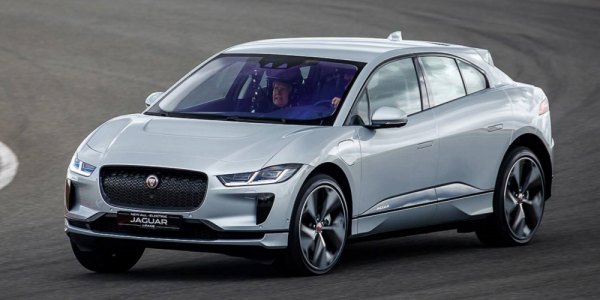
|
|
No
one had ever seen an SUV crossover shaped so much like a sports car...
|
|
Jaguar I-Pace is an
amazing vehicle. Just one and a half year ago the car was first shown
to
the public as concept in LA auto show. At that time, I guess few
believed it could make into production. Why? Two reasons. First,
no one had ever seen an SUV crossover shaped so much like a sports car.
The I-Pace shared a lot of styling elements with C-X75, Jaguar’s
mid-engined supercar concept, including its low and short nose. Its
windscreen and rear screen are set incredibly fast, faster than even
the sportiest hot hatches on the market. Its sexy waistline looks as if
taken straight from Ferrari 308GTB. Its low roof, broad shoulders and
long wheelbase/short overhangs proportion give you the perception of
lightness and a very sporty
feel. There are some SUVs on the market claimed to be the crossover
between SUV and Coupe, but Ian Callum makes them laughable by giving us
a truly sexy, sportscar-like crossover, which is going to
be a landmark in automotive design history.
Another reason we did not believe the I-Pace concept would be put into
production is the EV technology it requires. While electric SUV is not
a new idea (Tesla
Model X pioneered the thing since 2015), Jaguar Land Rover had no such
technology then.
Neither could it buy an EV system from giant suppliers like Bosch or
Continental because it was not available then. Mercedes, BMW and
Audi/Volkswagen had been investing heavily to develop
their own electric SUVs, but JLR is a smaller firm and it came later to
the party as well. Somehow, David beat Goliaths to the market first. In
just
one a half year, the I-Pace has shown Incredible
Pace in development, progressing from first concept to final
production car. How can you
not be impressed?
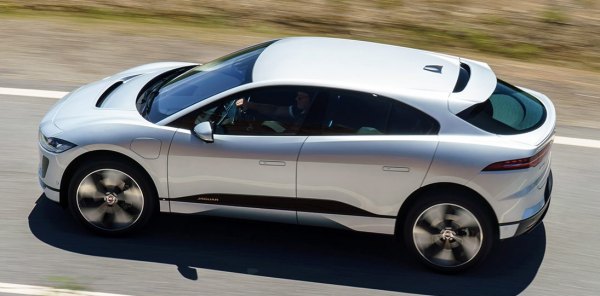
|
|
Jaguar
beats its much larger German rivals to put electric SUV to the market.
|
|
And judging from early road test reports, the quick development does
not come at the expense of anything. Put it straight, the production
I-Pace is well finished. Its design and engineering are well executed.
Its build quality is fine – at least matching the usual standards of
Jaguar, although those standards are usually a bit lower than German or
Japanese ones. Its practicality is good, too. Most important, it drives
good and should be satisfying to keen drivers who want more
practicality than coupes, more style than an E43 Wagon or a greener
manner than anything else offering the same performance. There is
nothing quite like it on the market, including Tesla.
Surprisingly, the I-Pace is not assembled in JLR’s own facilities, but
in the famous contract manufacturing plant operated by Magna Steyr in
Graz, Austria, which is also the home of E-Pace, Jaguar’s smallest SUV.
Its build quality is never in doubt, as BMW also employs Magna Steyr
for building the extra 5-Series it needs. What I am surprised is its
capability to handle the assembly of an EV, which is also a new attempt
to Graz. Why doesn’t JLR build the car by itself? Because its Solihull
plant is already occupied by XE and F-Pace as well as Range Rover
models. Moreover, over the years Magna Steyr has been proved more
efficient to handle low volume production, which fits the business
projection of I-Pace. Rumours said the production line can handle a
maximum output of 13,000 units a year. That seems to be a little
conservative, considering Tesla is moving 50,000 Model X per year.
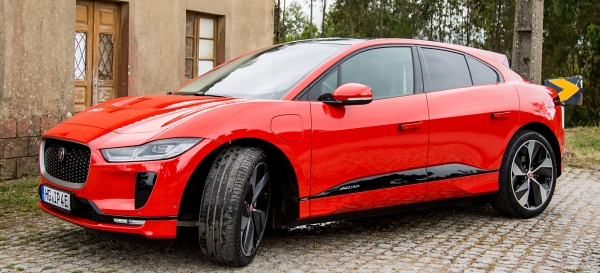
|
|
Only
Ian Callum's design team is bold enough to create a Ferrari kind of
SUV...
|
|
The I-Pace is not an affordable car, of course. Starting from
£59,000 and topping over £80,000 with all options ticked,
it is obviously designed for luxury seekers. However, it is still a
little cheaper than Tesla Model X, which starts at £75,000 for
the base 75D. While it is not as large or as accommodative as the
Tesla, it is clearly the sportier car, with faster acceleration and
significantly better cornering, thanks to its lighter weight, superior
chassis and lower center of gravity. Besides, its 90kWh battery is
larger than the Tesla’s 75kWh, offering a superior range of 298 miles
(480km) measured under the new WLTP cycles. That said, further
comparison between the two is pointless, because the I-Pace is so
different from
anything else. It opens a new class.
When Jaguar kickstarted this project, design boss Ian Callum told his
designers to forget everything they learned. He wanted Jaguar to return
to the cutting edge of car design with this one! An EV platform gives
them unprecedented freedom to shape the car. Because the batteries are
placed under the floor and the motors and power electronics are much
more compact than engine, gearbox and differential, you are no longer
led to the ugly, high-bonnet proportion of modern cars. If it was a
conventional FF, its front overhang could have never been as short as
the I-Pace’s. If it was an FR, its bonnet would have been stretched
much longer and the windscreen could not have been placed so forward
and raked so steeply. Mind you, Tesla is also free from these physical
constraints, but only Ian Callum's design team is bold enough to
abandon conventional proportion entirely and create a Ferrari kind of
SUV – and this is a mid-engined kind of Ferrari SUV. It wins my highest
regard!
 |
|
Its
roof is a massive 100mm lower than conventional mid-size SUVs,
including F-Pace.
|
|
Lowering the bonnet means the front
boot of I-Pace is not quite as big as Tesla’s. It swallows just 27
liters of things, but the rear boot is a massive 656 liters, well
beyond the 500 liters of Porsche Macan.
Size-wise, Porsche Macan has to be its closest rival. Although the
Porsche already has the sportiest proportion of its class, it is no
match for Jaguar. From the table below, you can see the I-Pace is 51mm
lower than Macan and a massive 100mm lower than the norm of mid-size
premium SUVs (including F-Pace). It is just as short as its rivals, but
its 2990mm wheelbase is by far the longest. Only an EV platform makes
these possible.
|
Jaguar I-Pace
|
Jaguar F-Pace
|
Porsche Macan
|
Audi Q5
|
Volvo XC60
|
Length
(mm)
|
4682
|
4731
|
4692
|
4663
|
4688
|
Width
(mm)
|
1890
|
1936
|
1926
|
1893
|
1902
|
Height
(mm)
|
1558
|
1652
|
1609
|
1659
|
1658
|
Wheelbase
|
2990
|
2874
|
2807
|
2819
|
2865
|
The long wheelbase should benefit ride and handling. The lower roof
reduces frontal area. Meanwhile, the slippery shape accompanied with
active shutter grille and a fixed rear spoiler results in a
class-leading drag coefficient of 0.29, which is perfectly acceptable
even for a saloon. A smaller CdA means the I-Pace spends less power to
slip through air. No matter what energy sources it use, higher
efficiency is always good.
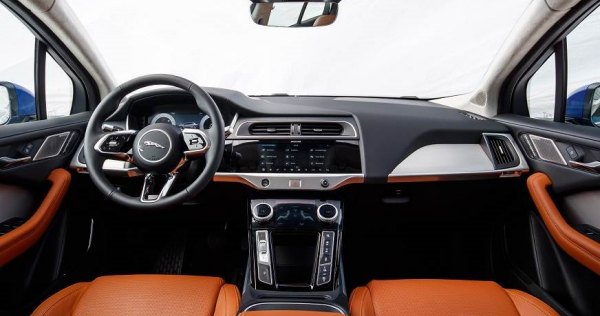
|
|
Build
quality is better than any existing Jaguar. Perhaps because it is built
by Magna Steyr?
|
|
The extra-long wheelbase benefits also cabin space. 6-footers can sit
comfortably behind 6-footers, with rear legroom equaling a BMW
5-Series. Despite the lower roof, headroom is good, too. The driver
seat is big and comfy, although it is mounted a little too high because
of the raised floorpan. For the same reason, when the front seats are
set to the lowest position, rear passengers get little foot room under
the front seats. Thanks to an expansive windscreen, the cabin feels
light and airy.
With high-quality leather and alloy all over the place, it smells
luxury. Build quality is better than any existing Jaguars (perhaps
because it is built in Austria?), although the cheap plastic switches
on center console prevent it from matching the German. The TFT
instrument panel claws back some points, as is the twin-touchscreen
layout on the center console which uses the upper screen for
infotainment and the lower screen for climate control. There are also a
pair of rotary switches and hardware buttons for easier control of
air-con. Nevertheless, Jaguar’s infotainment system software is not
quite as intuitive as rivals, and not as responsive to input as well.
The build quality is evident also on the move. Laminated windows and
good insulation keeps wind noise away from the cabin. It is also
completely free from squeaks and rattles, even though it is built at a
low volume production line. The near-silent electric motors make
cruising calm and relaxing, nearly like a Rolls-Royce.
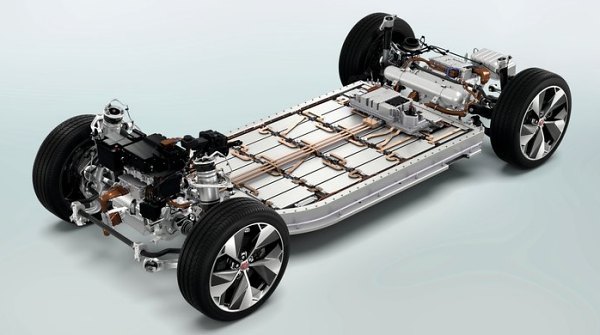
|
|
Its
torsional rigidity is also the highest among Jaguars, thanks partly to
the stiff floorpan which needs to house the 600kg of batteries safely.
|
|
Like most other dedicated electric car platforms, the I-Pace has all
its batteries placed in the floorpan and completely inside the
wheelbase. This enables its center of gravity to be 130mm lower than
that of the F-Pace, and it achieves a perfect 50:50 weight
distribution. There are two identical permanent magnet electric motors,
one at each axle and together they provide 400 horsepower and 512
pound-foot of torque. Although the car is also very heavy at 2133kg, it
has enough instant torque to achieve 0-60 mph in 4.5 seconds, good
enough to match a Macan Turbo or AMG E43 Wagon, if not the performance
version of Model X. However, its top speed is regulated at only 124 mph
(200 km/h) to save battery.
The chassis is constructed in bonded and riveted aluminum monocoque
like most JLR models. Its 94-percent aluminum content is the highest
among its stablemates, while its torsional rigidity of 36,000 Nm/degree
is also the highest, thanks partly to the stiff floorpan which needs to
house the 600kg of lithium-ion batteries safely. The suspensions are
similar to those of XE and XF, with double-wishbones serving up front
and integral link setup at the rear, supported with air suspensions and
adaptive dampers. Ride height can be adjusted depending on conditions:
drops 40mm to ease access to the cabin, lowers by 10mm at above 65mph
to reduce drag or raises by 50mm to go off-road. Speaking of
off-roading, its 4WD and torque vectoring should be very useful.
However, in normal driving below 30mph, the car is driven only by its
rear motor to save energy.
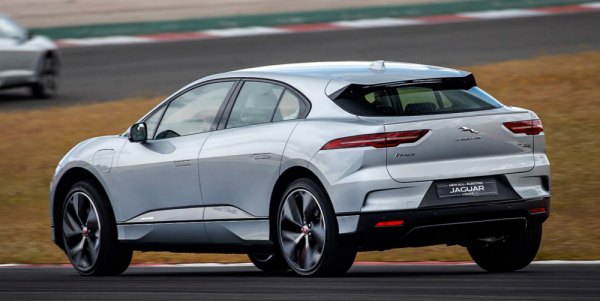
|
|
It
makes Tesla Model X feels all about straight line performance and
hopeless in corners.
|
|
On the road, the I-Pace feels quick, even quicker than the numbers
suggested, thanks to the instant torque which gives you relentless pull
right from the moment pressing throttle. It doesn’t give up until
hitting its 124mph regulator. At no moment you would want more
performance.
The car also handles its immense mass nicely. Sure, it is not going to
challenge a sports saloon carrying 500 kg less, but the low position of
its mass and 50/50 balance allows it to control its roll and yaw
remarkably well. Its suspension feels firm but not uncomfortable. The
chassis feels composed – flat in high-speed curves and settled on bumpy
B-roads. The steering is sharp, accurate and gives you enough weight
and feel, just like an F-Type or XE. The brake modulation could be more
linear, but it is powerful enough and you can use regenerative braking
alone for the majority of normal driving. There are loads of traction
and grip from the intelligent 4WD system, but the handling is not as
boring as Audi. It even allows a bit of lift-off oversteer.
The I-Pace feels smaller and nimbler than an SUV has any right to be.
It makes Tesla Model X feels all about straight line performance and
hopeless in corners. Even though it is the company’s first electric
SUV, its Jaguar DNA is kept intact. The only concessions you have to
make is to accept its lack of engine note, its long charging time,
unproven reliability or its premium prices. Otherwise, the I-Pace is a
perfect car. Bridging the gap between sports cars and SUVs, it is the
first true Sport Utility Vehicle in the world, ridiculously.
|
Verdict:      |
|
Why does
AutoZine include Jaguar I-Pace?
As you know, over the years AutoZine
refuses to talk about SUVs. The
reasons are obvious: compared with the sedans, hatchbacks and wagons
offering the same spec., SUVs add unnecessary weight, drag and lift
center of gravity. This means they are more polluting than conventional
cars yet being slower, poorer to handle thus less fun to drive.
However, in recent years the trend of SUV
shifts to crossovers and gets
closer and closer to conventional cars. In some cases, like Citroen C4
Cactus, there are no discernible differences from tall-body hatchbacks
other than cosmetic. I do not oppose to the tougher looks of
crossovers. As long as they deliver performance, handling and economy
comparable to conventional cars, there is no reason to object to them.
Jaguar I-Pace is such a car. While it is
marketed as an SUV crossover
and targeted at Porsche Macan or Tesla Model X, it is much lower than
any rivals on the
market. Its frontal area is closer to conventional cars, while its drag
is comparable to sedans. Moreover, the electric
platform gives it a center of gravity lower than other cars - not just
crossovers but also sedans and hatchbacks. This means it should offer
sharper handling and a great deal of fun hustling it. Being an EV, its
energy efficiency is also much higher than any conventional cars. In
addition to its sportscar looks, it is hard to resist including it in
the scope of AutoZine.
If the trend of crossover cannot be
reversed, I hope the I-Pace will be
a role model for other car makers.
|
|